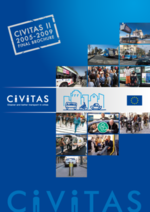
Image from Unsplash by Kevin Perez Camacho
Kraków (Poland)
Krakow is one of the oldest and largest cities in Poland. It lies on the Vistula River at the foot of the Carpathians. The city has almost 800,000 inhabitants and covers an area of 327 km2.
The old city centre was among the first sites to be included on the World Heritage List of the United Nations Educational, Scientific and Cultural Organization (UNESCO). Krakow is a prominent centre of culture and science and an increasingly popular tourist destination. It was chosen as the cultural capital of Europe for 2000. The city is also home to metallurgical, steel, chemical, food, clothing and printing industries.
Public transportation is based on trams and buses operated by a municipal company. The historic city centre has largely been pedestrianised. In Krakow, an integrated ticket between national rail and city transportation resulted in a 15 percent increase in this type of public transport trip, although some of the increase may have come from regional bus lines not integrated in the fare system. The city also implemented car-pooling and car-sharing schemes, as well as a bike-on-bus scheme. Zones with restricted access were introduced using number-plate recognition technology, removing many cars from the city centre and increasing the attractiveness and operating speeds of city trams.























